20+ budget-friendly tricks to reduce your water usage and save money
Reduce water usage and cut those bills!

VanderWolf Images / Shutterstock
Water is a precious resource all year round but during warmer months reducing water usage in the home becomes more of a priority. Concerning factors such as global warming, hosepipe bans and the higher cost of living mean conserving our water supplies during dry spells is a smart move.
From water-reducing gadgets to embracing new habits, read on on for water-saving tips to adopt during the summer months and beyond.
Keep a jug of water in the fridge
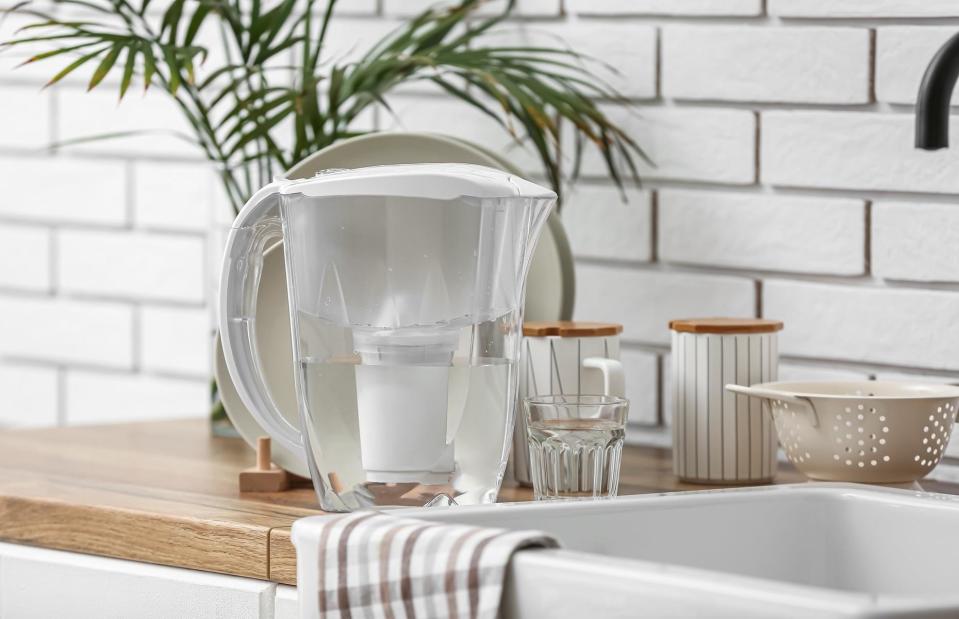
Pixel-Shot / Shutterstock
Instead of running the tap until the water reaches the right temperature for drinking, letting all the water disappear down the drain, fill a jug or pitcher and keep it in the fridge to consume when you need it.
A water jug with a water filter attachment is also a fantastic money-saving alternative to bottled water. Why not add pieces of fruit or cucumber to enjoy as an infused, chilled beverage?
Don't overfill the kettle
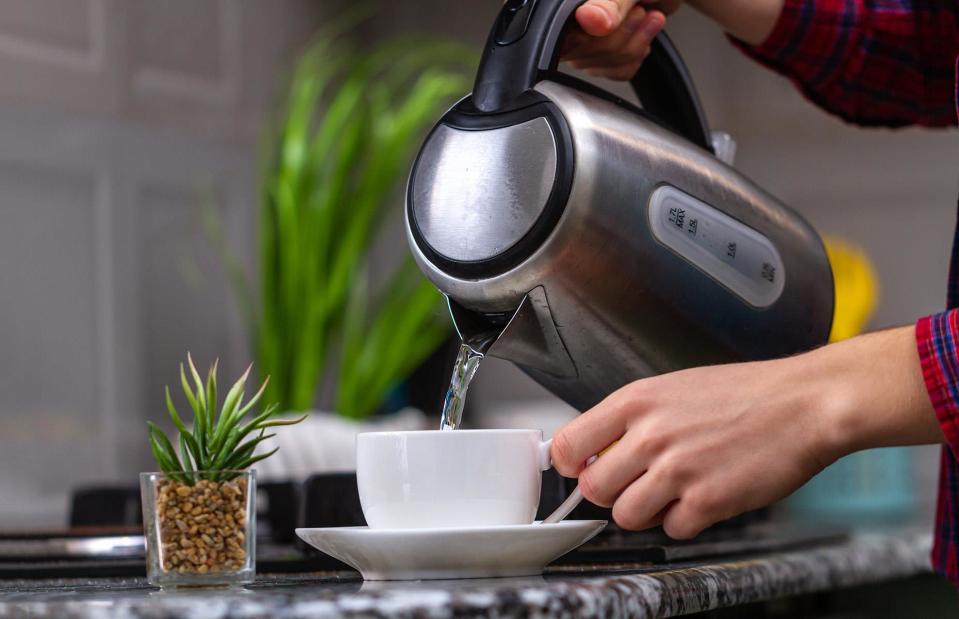
goffkein pro / Shutterstock
Every time you pop the kettle on, do you tend to fill it to capacity? Then, when it's time for another 'cuppa' are you guilty of emptying the kettle to refill? Well, this is almost certainly costing you money!
Ditch this common bad habit by only boiling the necessary amount of water. Use the volume indicator on the side of the appliance or fill your mug with water from the tap and pour it into the kettle to boil.
Learn to wash up in order
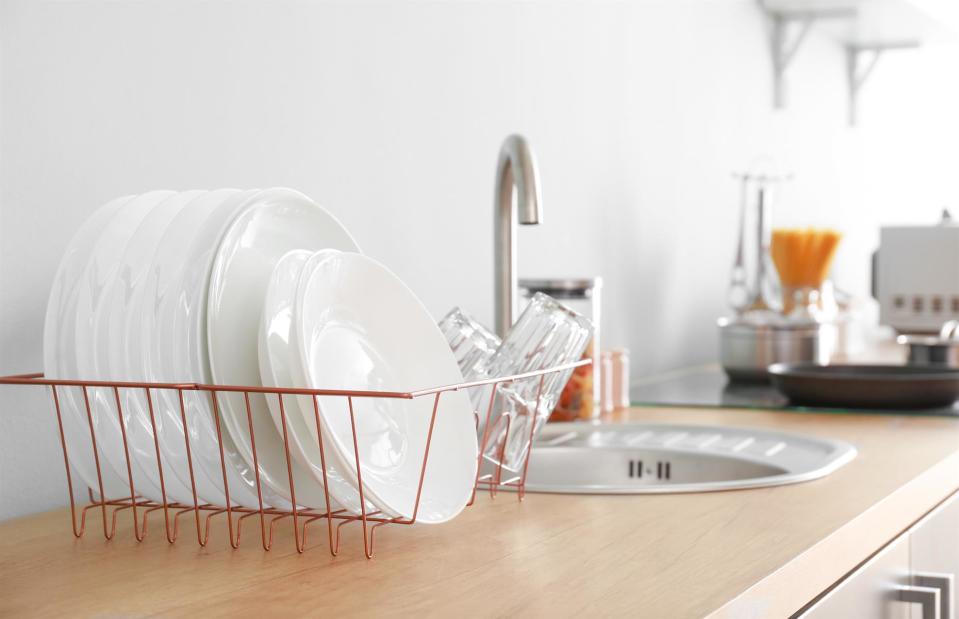
Pixel Shot / Shutterstock
Have you been washing up wrong your entire life? If you wash your dishes by hand, re-educating yourself on this common life skill could save you time, money and water.
Experts at the Good Housekeeping Institute recommend following this order to keep your water and dishes as clean as possible during the washing process: In hot, soapy water, start by washing glasses, then mugs. They are followed by saucers, side plates, dinner plates, cutlery, serving dishes and pans. Roasting tins should be left until last.
Be smart with dishes
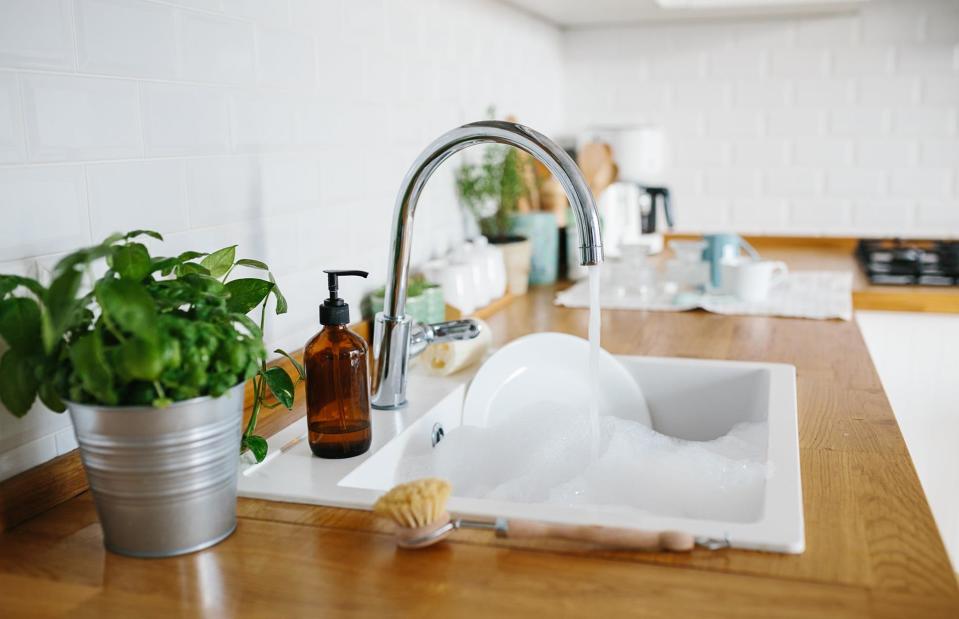
Switlana Sonyashna / Shutterstock
As well as washing items in the right order to be more efficient, there are a few other ways you can reduce water when carrying out this daily chore. Try wetting a soapy sponge with a little water, before turning off the tap. Wipe down your dishes and only turn the tap back on when you’re ready to rinse a few items.
Or, even better, use a washing-up bowl or use a plug in the sink, so you don’t have to let the water run. Don't pre-rinse dishes, just scrape them in advance and consider having a separate bowl of clean water for rinsing purposes.
Fill the dishwasher
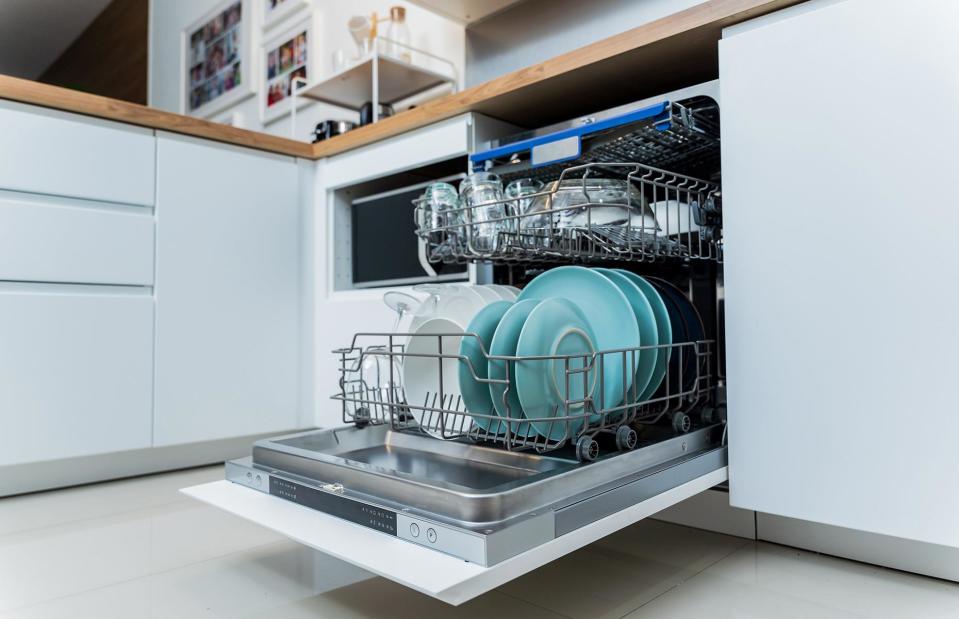
Roman Zaiets / Shutterstock
Consumer research champions, Which? has found that the most water-efficient dishwasher uses almost 10 times less water to wash the same amount of dishes as hand washing them. In fact, even the least water-efficient dishwasher on the market only uses half the amount of water.
Make sure you run your machine when it's full and select the eco-cycle, if you have one. This will cost you far less when it comes to bills, too. Don't waste water rinsing the dishes, simply scrape off any food, because most dishwashers are powerful enough to remove leftover debris.
Capture your cooking water
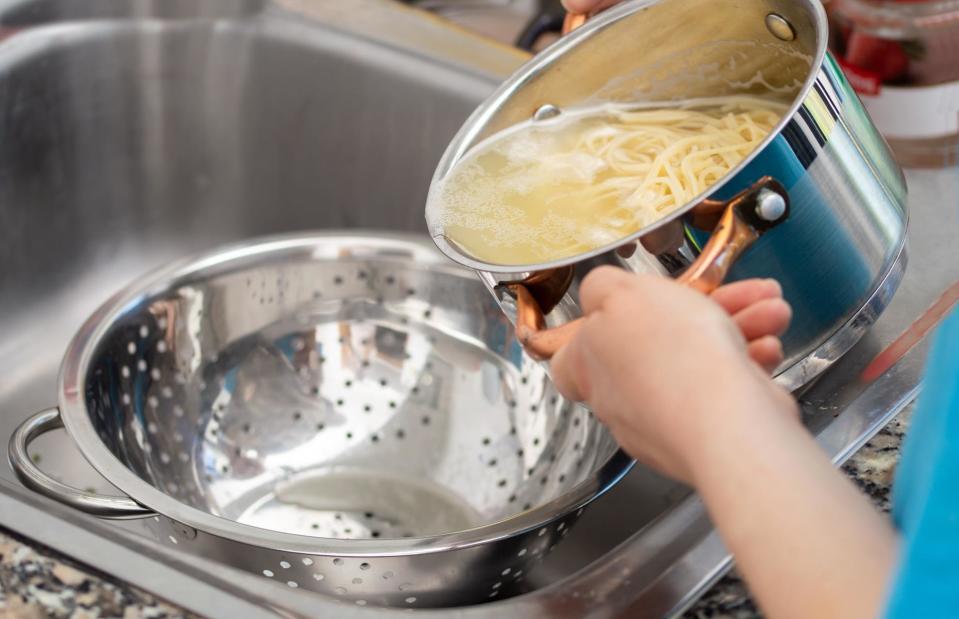
INAOX / Shutterstock
Re-using cooking water is not only wise when trying to save water, but it can be a clever gardening hack, too. If you've cooked vegetables, the boiled water will be infused with nutrients – perfect for giving your plants a boost.
Once cooled, use it to water your garden or indoor plants. Alternatively, foodies will know it can also be saved to make gravies and sauces. Pasta water is fantastic for binding and thickening sauces.
Steam rather than boil
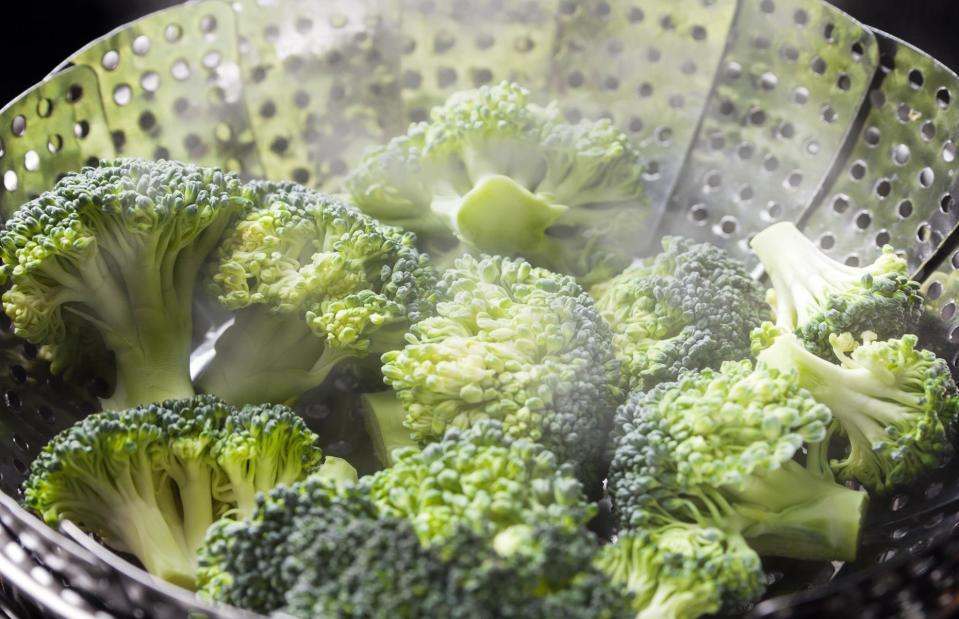
Leszek Glasner / Shutterstock
Did you know that steaming your vegetables not only saves water but makes them more nutrient-rich? You can purchase fancy steamers to do the work for you, but the easiest and cheapest way is to add an inch of water to the pan and insert a simple steamer basket on top.
As the water boils, the steam will rise up and cook the vegetables above. Any leftover water can then be reused for either the dishes or the garden once cooled
Fit water-saving tap nozzles
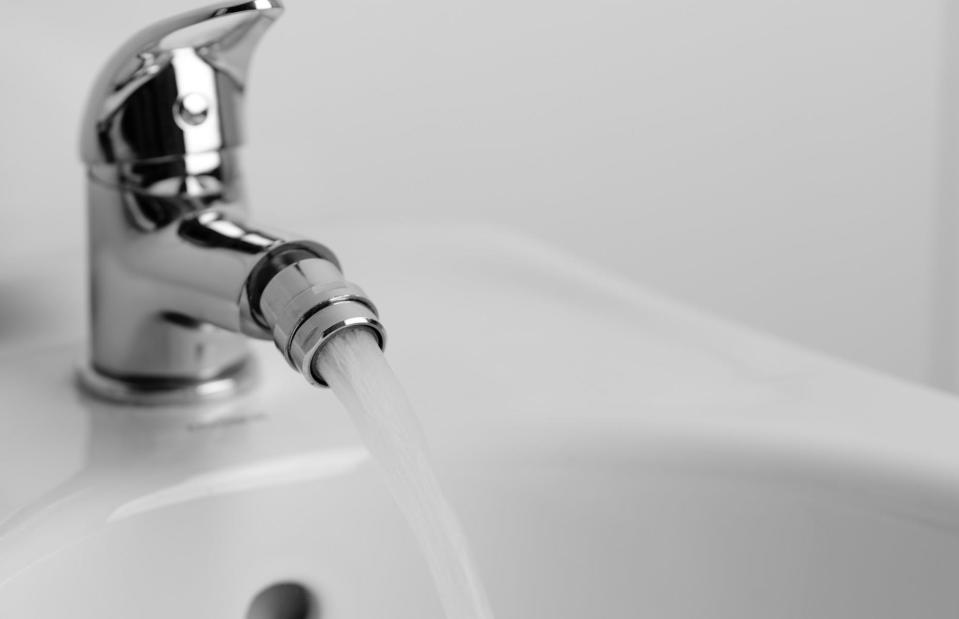
levente imre takacs / Shutterstock
Today, a lot of taps and showers are designed with built-in water-efficient regulators that deliver optimal flow. But if you don't already have water-saving taps, you can instead purchase a nifty nozzle that will do the job. You can find them online and from numerous retail stores.
Turn the tap off while brushing your teeth
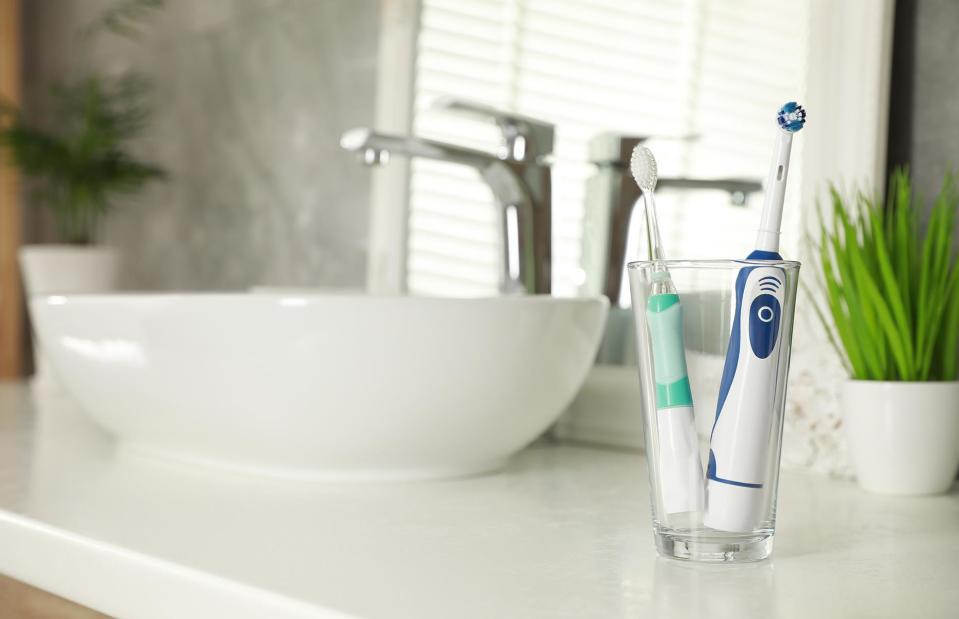
New Africa / Shutterstock
Leaving the tap running while cleaning your teeth, shaving or doing the washing up – even if it's only for a few minutes – can add up throughout the year.
In fact, according to Thames Water, a family of four could save around £36 per year on their metered water bill if they only turn the tap on when rinsing.
Conserve water when flushing
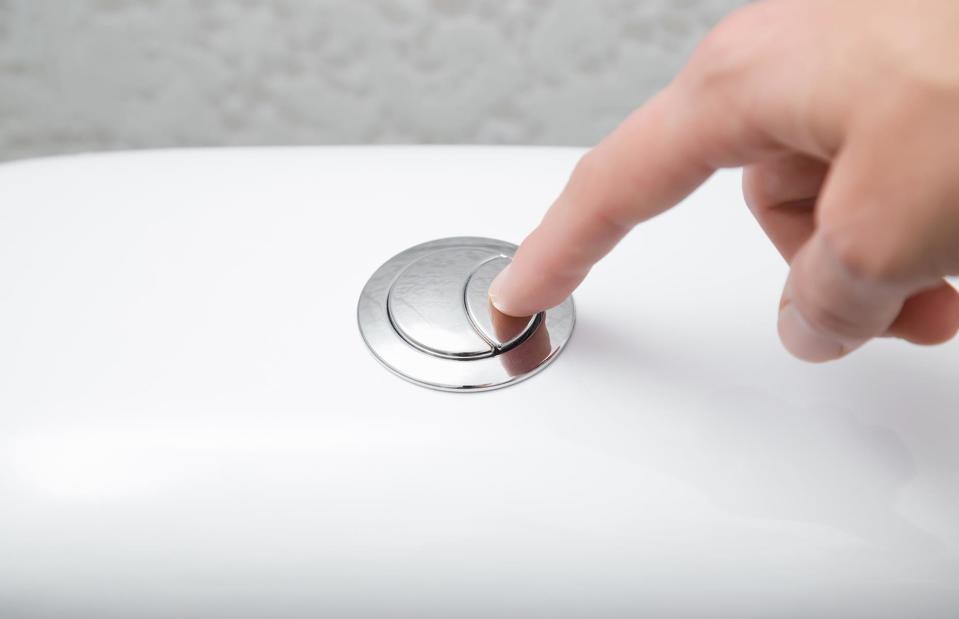
FotoDuets / Shutterstock
Although necessary, toilet flushing is one of the biggest water guzzlers of the home. But there are ways to use less liquid after spending a penny. If installing a new bathroom, opt for a dual flush toilet that has high- and low-volume flush options.
Alternatively, pop a displacement bag in the cistern. They work by displacing water within the cistern and can save you one litre of water each time you flush your toilet. Easy-to-fit and zero-maintenance, these clever gadgets could save you, on average, 4,800 litres of water a year, not to mention a chunk of your utility bill!
Limit shower time
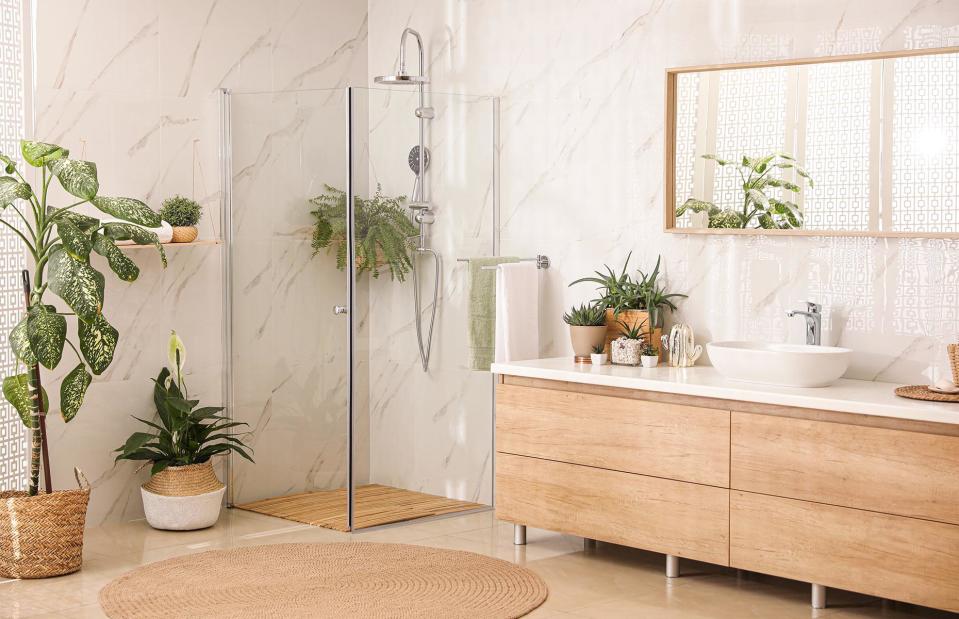
New Africa / Shutterstock
It's general knowledge that showers are more energy- and water-efficient than baths, meaning you could save money and cut your water usage by swapping to showers.
Plus, cutting the time you spend in the shower will help even further. Aim for showers of between four and seven minutes. The easiest way to do this is by setting a timer on your phone. You can even fit a digital shower with a time-limit function.
Switch your shower head
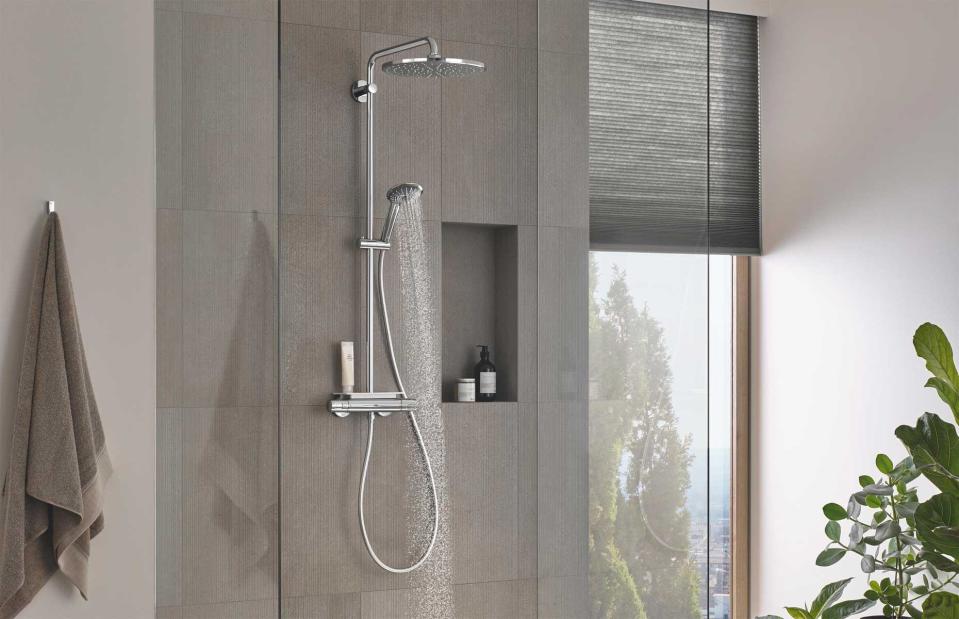
Grohe / Press Loft
Installing a water-saving shower head is a great way to cut down on your energy bills and use less water. New technology means you could reduce consumption by almost 50%.
The Grohe EcoJoy, for example, has a few different spray options, including an Eco Spray function that's incredibly budget-friendly.
Collect and use greywater

ivan kislitsin / Shutterstock
Sometimes a bath is more practical, especially if you have small children. However, using the bath water afterward can be perfect for quenching a thirsty garden. Greywater refers to used bath water, washing up water, or even washing machine water from the rinse cycle.
Especially during water shortages, greywater is effective at hydrating plants in your garden. That being said, contaminants such as soap, detergent and water-softening salts can have a negative impact on your greenery, so use wisely.
Launder less

Pixel-Shot / Shutterstock
By running only full laundry loads you are not only saving water but energy, too. When you do switch your washing machine on, take advantage of economical settings and skip the extra rinse mode.
Fix leaks ASAP
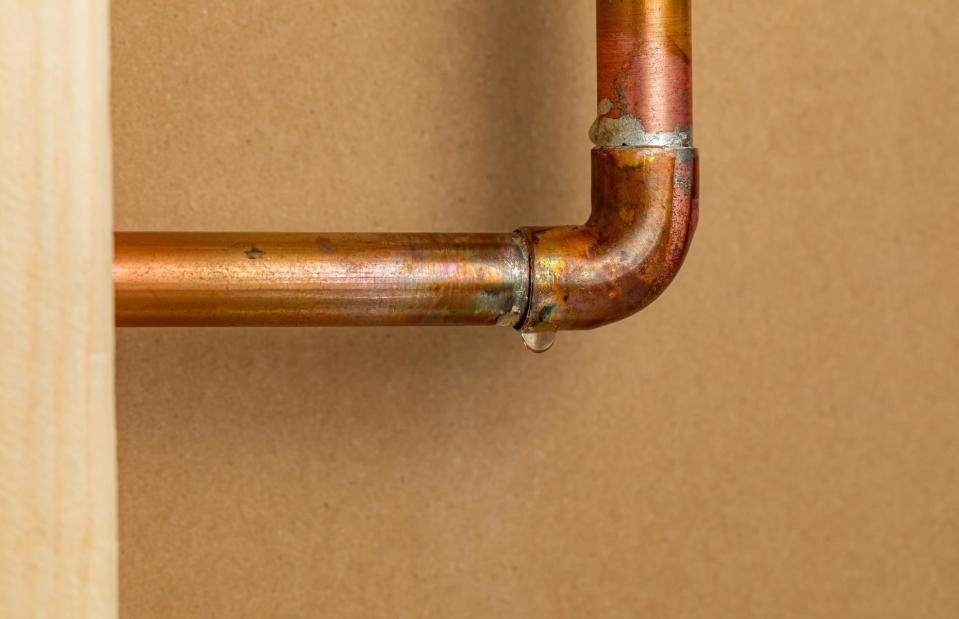
J.J. Gouin / Shutterstock
Addressing and repairing leaks is essential if you want to keep water costs down. The most common culprits are dripping taps, toilet flappers and shower heads. Shockingly, a leaking toilet can waste between 200 and 400 litres of water per day, according to Tissino.
Check and repair any sources of leaks in your home and address the problem immediately. A water monitor and shut-off is a gadget that can be installed to sense leaks, shut them off and alert you via your smart device before they become a problem.
Limit lawn cutting
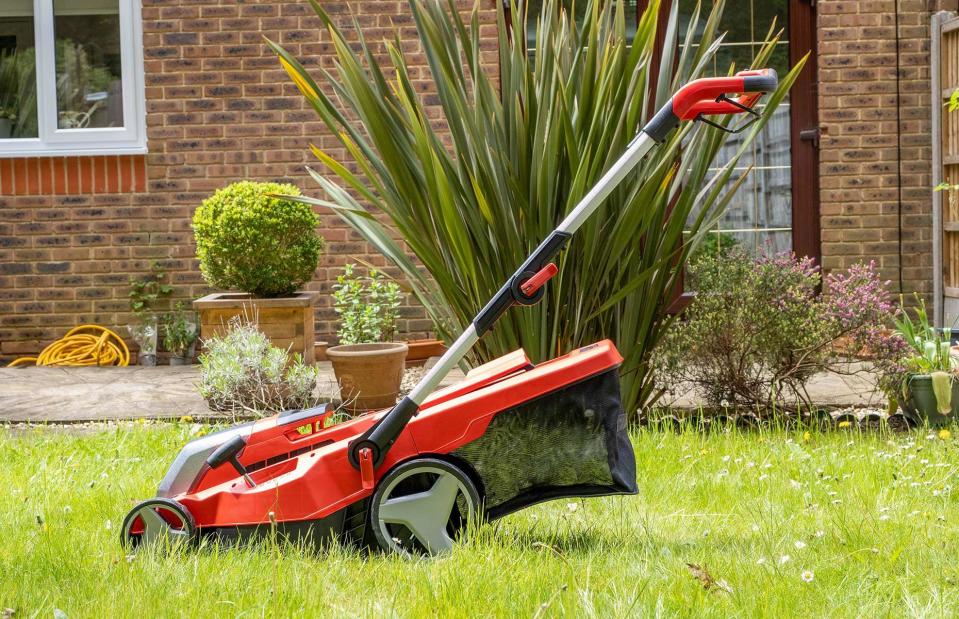
Cliff Day / Shutterstock
Cutting your grass during a heat wave, without access to a water source, can do serious damage to your lawn and could be an expensive gardening mistake. A newly mowed lawn, cut short, will encourage growth, which then requires hydration. When you do cut, make sure the lawn mower is set on a longer blade cut setting.
Also consider leaving your grass cutting on the lawn, as they can act as a mulch and trap the moisture in the soil. Make sure the clippings are small though, as you don’t want to completely cover the grass and stop it from accessing sunlight.
Lay mulch
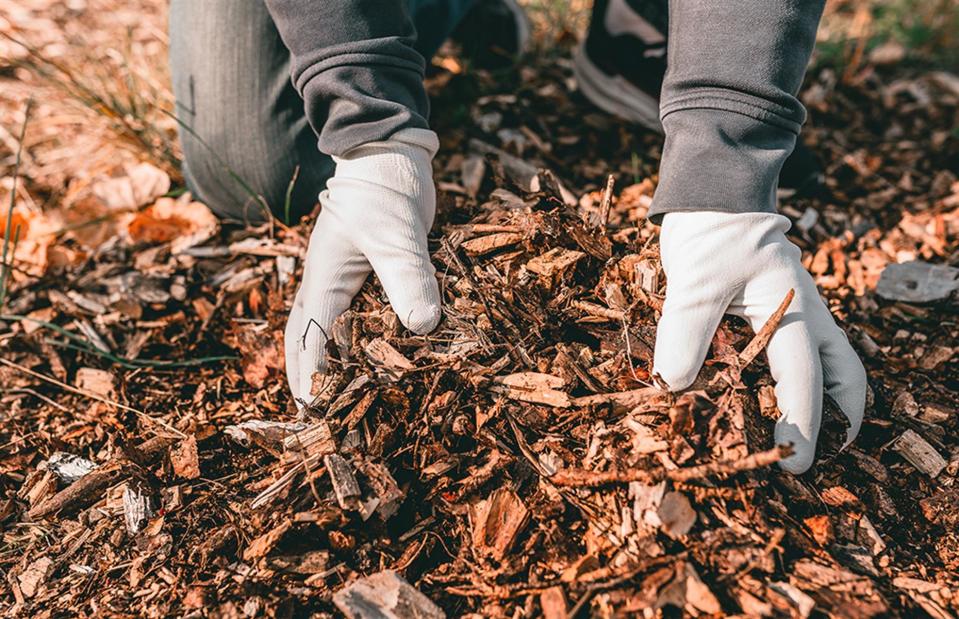
2021 larisa Stefanjuk / Shutterstock
Talking of mulch, this is a fantastic resource for gardeners. By applying a layer of wood chips, bark or even pebbles on top of your soil, you can suppress weeds and deter common garden pests.
Plus, mulch is brilliant for helping soil retain moisture, as it limits evaporation, reducing the amount of watering your plants require. Even better, mulch is incredibly affordable and can be picked up in large quantities for mere pounds.
Train your lawn
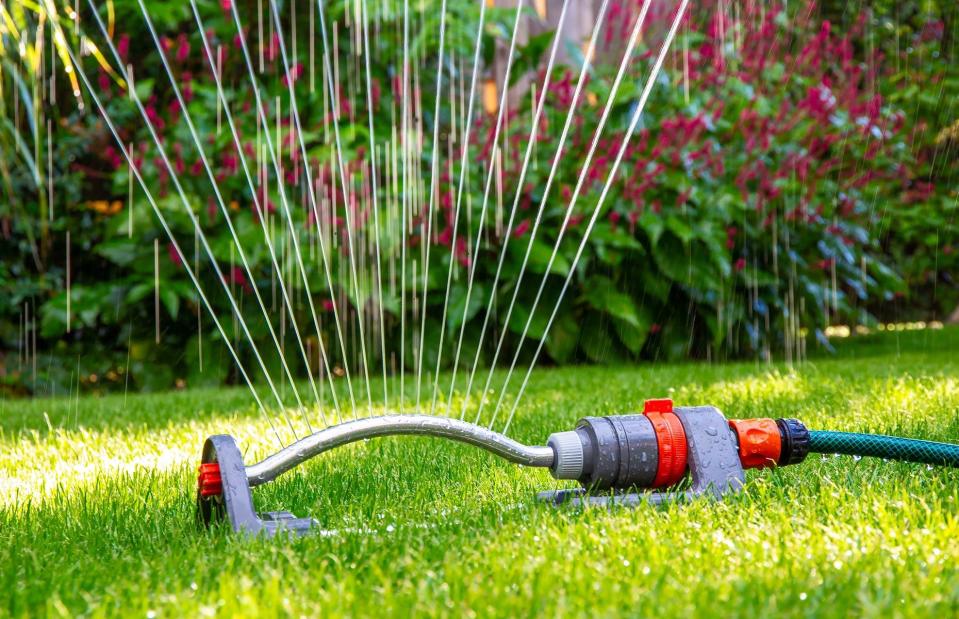
WanderWolf Images / Shutterstock
Put the sprinkler away! It's a common misconception that your lawn needs watering every day when in reality it can go far longer without a drink. In fact, gardening experts believe grass can actually become dependent if it has too much water.
So, instead of watering your lawn every day for 15 minutes, select one day a week to water it for a longer period of time. This will make the lawn healthier and more tolerant to droughts.
Choose drought-tolerant plants
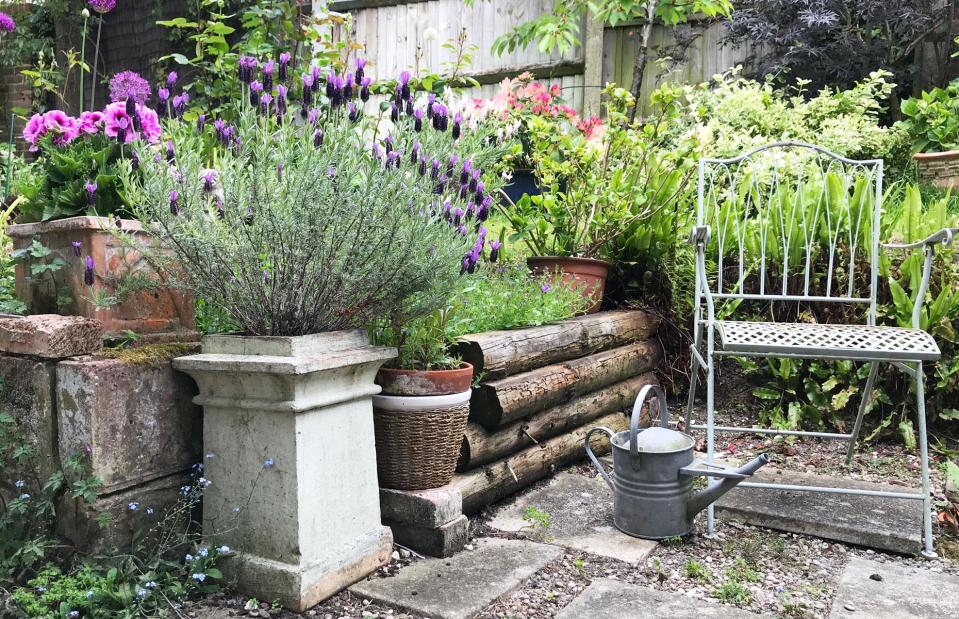
Rachel Homer
As our summers seem to be getting warmer, choosing drought-tolerant plants will ensure your garden and landscapes continue to thrive. Drought-tolerant plants include lavender, rosemary, sedum, geranium and eryngium.
These lovely plants will inject colour and scent into your garden, without needing too much attention or water.
Skip the car wash
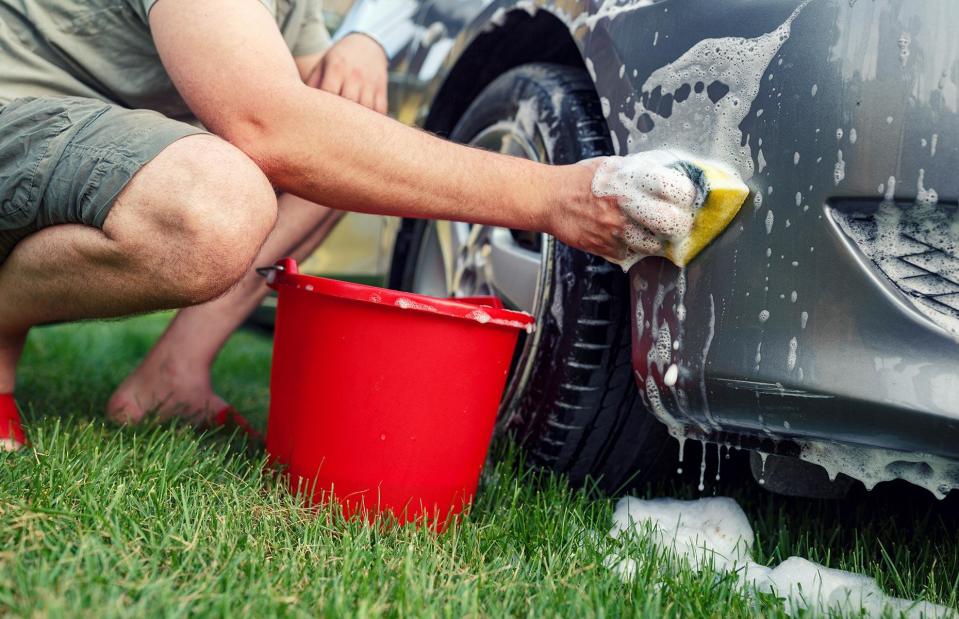
GreenMiles / Shutterstock
Instead of heading to the car wash or taking a hose out to the drive, try using waterless car cleaning products instead. They do rely on chemicals to clean only slightly sullied vehicles, but make an adequate alternative in the short term. Simply spray onto surfaces and wipe clean with a damp, non-scratch cloth.
If you're desperate to wash your car, then fill a bucket to limit the amount of water you're using.
Use a hose gun attachment
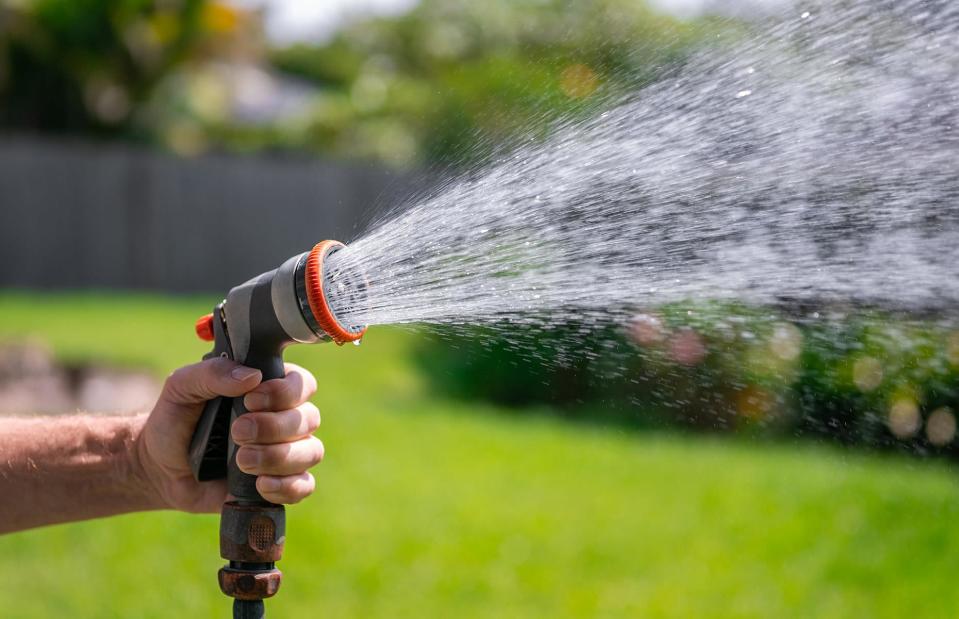
Pic Media Aus / Shutterstock
The average hosepipe is thought to use 170 litres of water for every 10 minutes that it is turned on. That's almost 19 flushes of a toilet in just 10 minutes. However, a budget-friendly spray gun attachment will control and restrict the flow drastically.
"Fitting a hose gun attachment to your hosepipe can help you control where and when you use water in the garden," The Energy Saving Trust says. "Hosepipe spray guns use up to 50% less water per use. You should also consider using a watering can first to save even more water."
Invest in a water butt
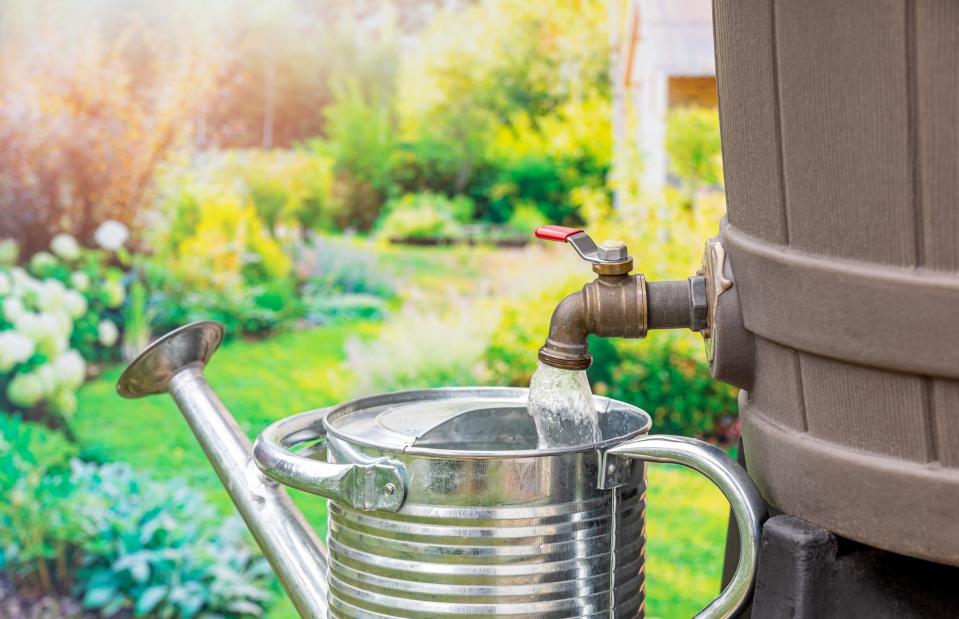
J.J. Gouin / Shutterstock
A water butt collects rainwater from roofs and gutters, so you can give your garden a good soaking without drawing on public reserves. Plus, plants much prefer rainwater to water from the tap.
As well as residential roofs, water butts can be installed next to garages, sheds and garden rooms and you can get them to suit both traditional and modern outdoor spaces.
Install a water count meter

Evgeny Haritonov / Shutterstock
Making the switch to a water meter will naturally give you a better indication of how much water you are using and therefore how much you spend. Research by Thames Water shows that customers on a meter typically use around 12% less water.
If you are not currently on a metered system, the best way to get started is to contact your local water supplier. Alternatively, attach a water count meter to keep an eye on the amount being used and educate yourself on areas where you could cut down on both your usage and bills.


